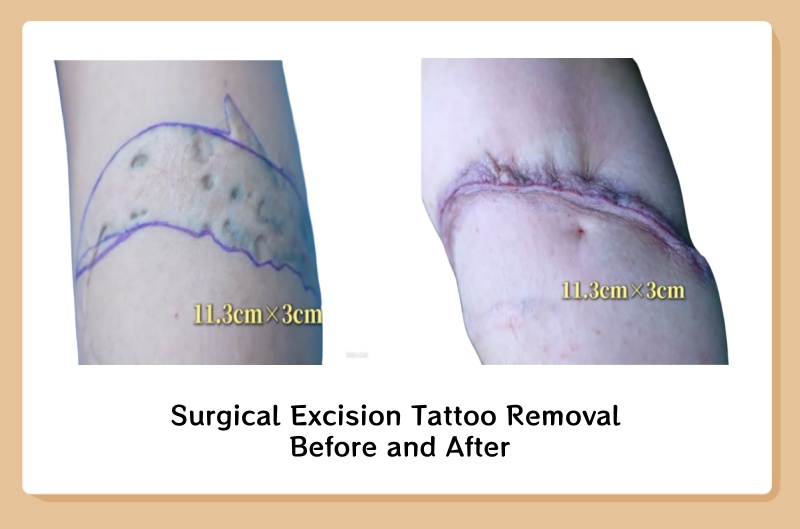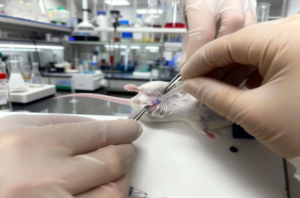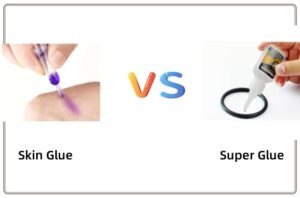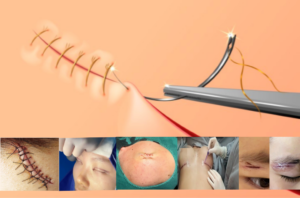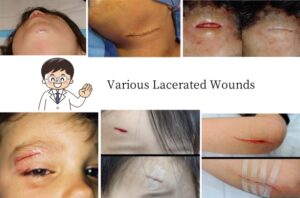Tattoos, once considered permanent symbols of identity, may become relics. Many people want to remove their tattoos. This could be because of a change in their personal style, regret over the design, or just a change in their life circumstances.
Research indicates that up to 25% of individuals with tattoos experience some form of regret, underscoring the increasing demand for safe and effective removal methods.
The removal of tattoos may appear to be a daunting task; however, recent developments in medical technology, notably in the field of laser treatments, have made the process significantly safer and more effective than it was in the past.
Because of this, it’s very important to get help from a qualified medical expert to navigate the challenges of tattoo removal, understand the possible risks, and ensure the best results.
With the help of this guide, you will learn everything you need to know about tattoo removal, from the numerous treatments that are accessible to the significance of post-treatment care and the creative use of wound skin glue in the process.
What is tattoo removal?
Tattoo removal is a medical or cosmetic procedure designed to eliminate unwanted ink permanently embedded in the skin. When a tattoo is applied, ink particles are injected into your skin.
The diameter of its particles (usually 50-1000 nanometers) is much larger than the phagocytic capacity of human immune cells (such as macrophages)-the body’s immune system to remove naturally and can only wrap them and deposit them in the dermis of the skin to form a stable tattoo pattern.
Tattoo removal techniques work by breaking down these stubborn ink particles so that the immune system can gradually clear them away.
Several methods are available for tattoo removal. Laser treatment is the most common and effective method. It uses concentrated beams of light to target the ink particles, breaking them into “micro-particles” less than 20 nanometers in diameter. Other options include surgical removal, dermabrasion, and chemical peels.
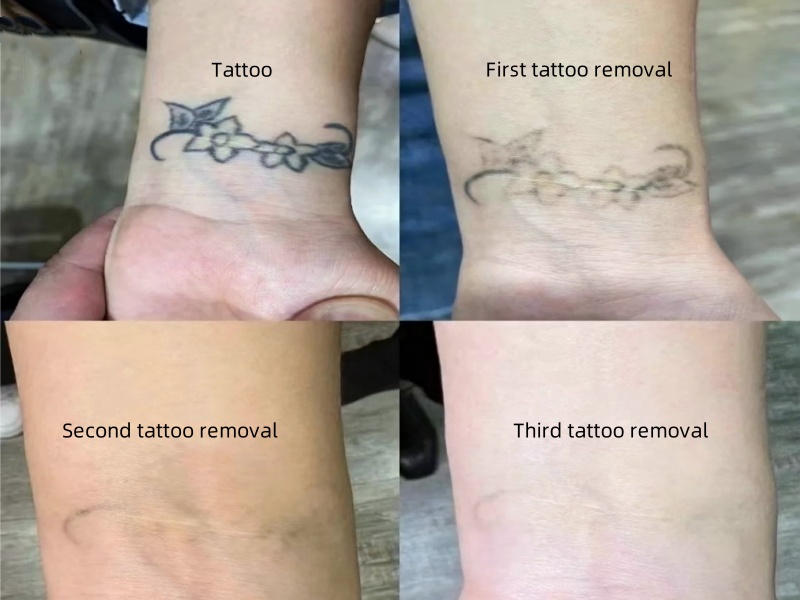
Due to the limited speed of the immune system’s clearance, the process usually requires multiple courses of treatment, and only part of the debris can be removed in one treatment. Therefore, multiple treatments are required at intervals of 1-3 months (usually 3-10 times, depending on the size of the tattoo, color, ink depth, etc.)
If you are considering tattoo removal, consult a dermatologist or healthcare provider to discuss the best option for your specific situation and to develop a realistic expectation of the results.
Types of tattoos
Tattoos are rich and varied in type. According to the ink characteristics and depth of penetration of different tattoos, they can be divided into the following categories:
1. Shallow monochrome tattoos
The ink is monochrome (mainly black and blue) and only penetrates the epidermis—the superficial dermis.
The color is visually light (such as thin-line letters, small fresh symbols, etc.)
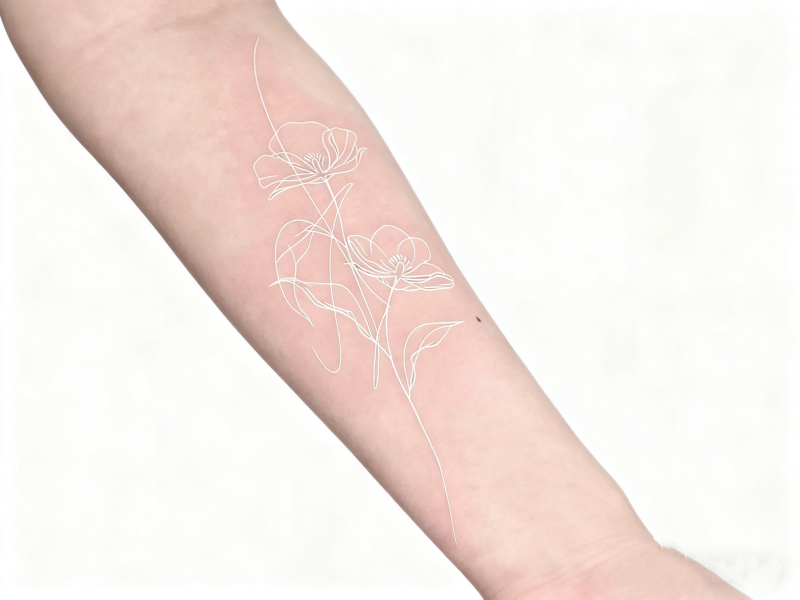
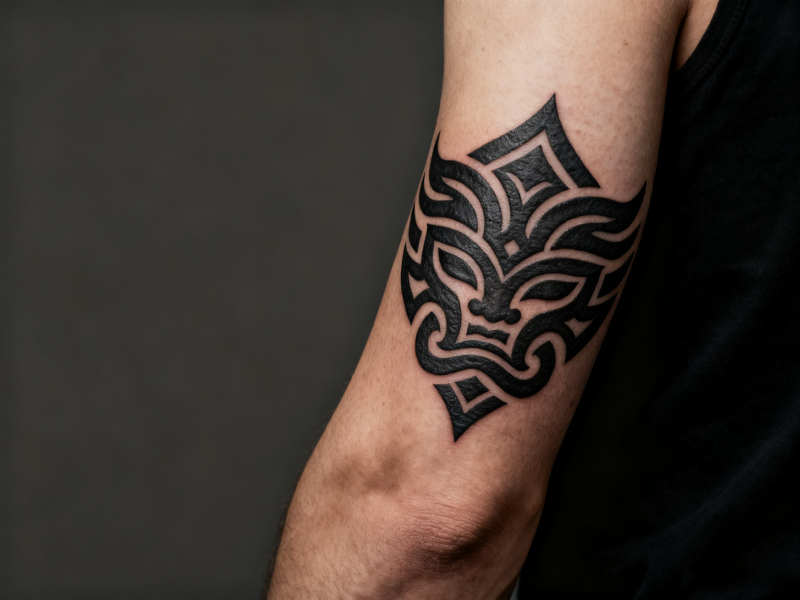
2. Deep monochrome tattoos
The ink is monochrome (mostly pure black and dark blue) and penetrates the middle layer of the dermis.
The color is visually rich and the lines are thick (such as Japanese old traditional color blocks and thick-line totems).
3. Color tattoos
The ink contains more than 3 colors (red, yellow, green, etc.) and penetrates the superficial-middle layer of the dermis.
It contains gradients/contrasting colors (such as realistic portraits and watercolor halos), and the ingredients contain heavy metals (red contains mercury and yellow contains cadmium).

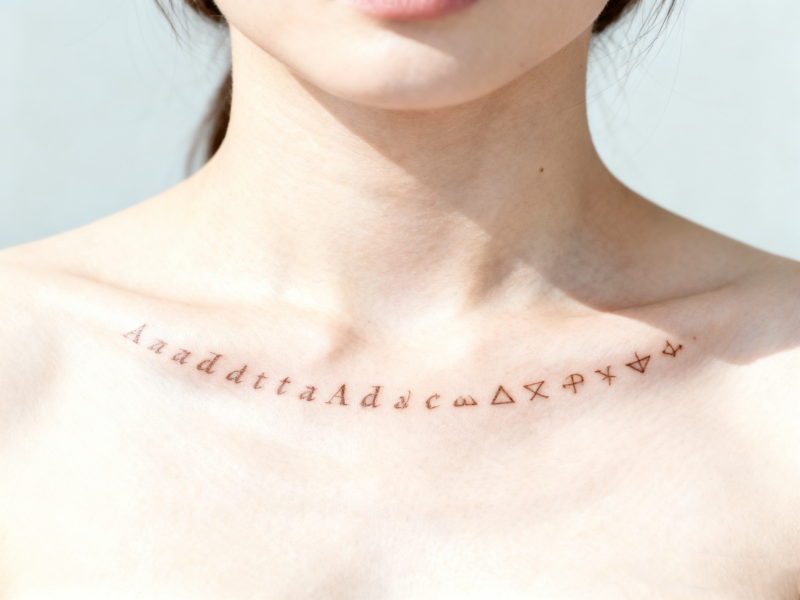
4. Semi-permanent tattoo
The ink is a plant-based pigment that is only injected into the epidermis (not the dermis).
It is commonly used for eyebrow tattoos, lip tattoos, and hairline tattoos. It fades naturally over 2–3 years.
Why it's done
Everyone has their own reason for wanting to remove a tattoo. Some of the most common reasons include:
- No longer like the style
- Religious or cultural concepts: Some religions have strict regulations on tattoos. For example, some Christian denominations believe that tattoos are a blasphemy against the body. The body is God’s masterpiece, and it should not be marked on at will.
- Professional needs: Many professions have clear restrictions on tattoos.
- Skin infection or allergy: If the operation is not standardized during the tattoo process, the equipment is not thoroughly disinfected, or the quality of the tattoo pigment is poor, it is easy to cause the skin infection.
- The tattoo pattern is seriously deformed or faded.
- Tattoos associated with former partners or loss of commemorative significance.
The types of tattoo removal
Laser tattoo removal
Laser tattoo removal is a non-invasive or minimally invasive technique that utilizes concentrated beams of light to eliminate unwanted tattoos from the skin.
The process typically requires multiple treatment sessions conducted by a qualified professional to achieve significant fading or complete removal of the tattoo.
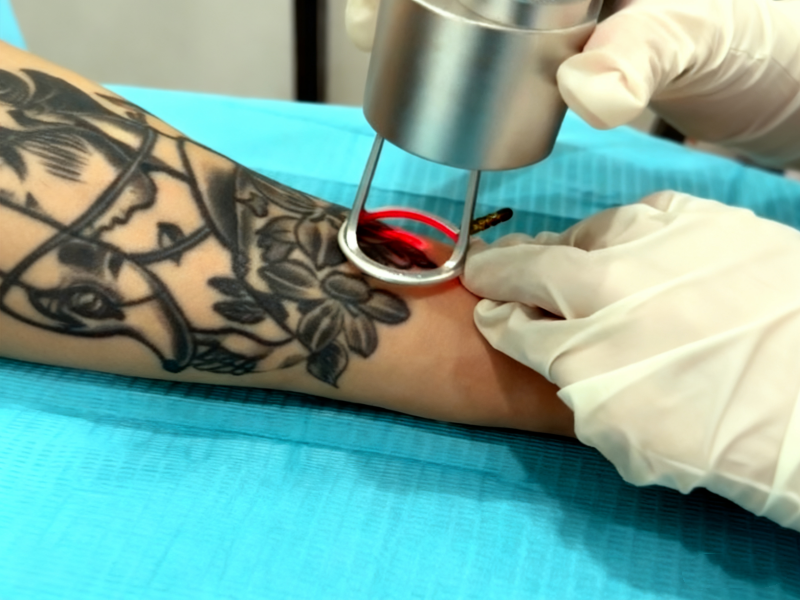
Type of laser tattoo
Type of laser tattoo | Principle | Application | Feature |
Q-switched Nd:YAG laser | Nanosecond Pulse | 1064nm: Black and blue tattoos, safer for darker skin 532nm: Red and brown tattoos | Longer wavelengths result in less absorption of melanin, reducing the risk of pigment changes in darker skin types |
Picosecond laser | Picosecond Pulse (Shorter Pulse Width) | Multi-color tattoos (including some bright colors that are difficult to remove), skin rejuvenation | The photomechanical effect is stronger, which can break down pigment particles into smaller pieces, reduce the number of treatments, improve the removal effect, and may reduce pain and side effects. |
Q-switched alexandrite laser | Nanosecond Pulse | Blue, green, and black tattoos | Wavelength (typically 755nm) that is efficiently absorbed by blue and green pigments |
Q-switched ruby laser | Nanosecond Pulse | Blue, black, and green tattoos | The wavelength (694nm) is most effective for black, blue, and green pigments, but has a higher risk of hypopigmentation on darker skin. |
Pain and side effects of laser tattoo removal
The degree of pain is mainly related to the tattoo site, the tattoo situation and the individual tolerance. Generally, the most direct and effective way to relieve pain is to apply local anesthetic ointment on the skin before treatment.
Main side effects
- Redness and burning
- Slight oozing or crusting
- Scarring
- Hyperpigmentation, hypopigmentation
- Infection
- Allergic reaction
Laser tattoo removal aftercare
- Strict sun protection.
- Keep it clean and dry.
- Avoid scratching: Let the scab fall off naturally; avoid scratching, otherwise, it may leave scars.
Dermabrasion tattoo removal
Dermabrasion is a surgical procedure for tattoo removal that involves using a high-speed rotary instrument with an abrasive wheel or wire brush to mechanically remove the outer layers of skin containing the tattoo ink.
Because it is a painful process, it is typically performed under local or general anesthesia. Healing takes about 10 – 14 days.
Multiple sessions may be needed. It can cause significant scarring and is less effective than laser removal.
Chemical peel tattoo removal
Chemical peeling removes tattoos by applying chemical solutions (such as trichloroacetic acid, salicylic acid, etc.) to the tattoo area, using the corrosive effect of chemical substances to peel off the skin tissue containing the tattoo pigment layer by layer, and finally letting the pigment fall off with the necrotic skin so as to achieve the purpose of lightening or removing the tattoo.
This method is more suitable for removing small-area tattoos with light pigment, and the effect is poor for large-area tattoos with deep pigment deposition (such as dermal tattoos) or complex colors (such as dark tattoos).
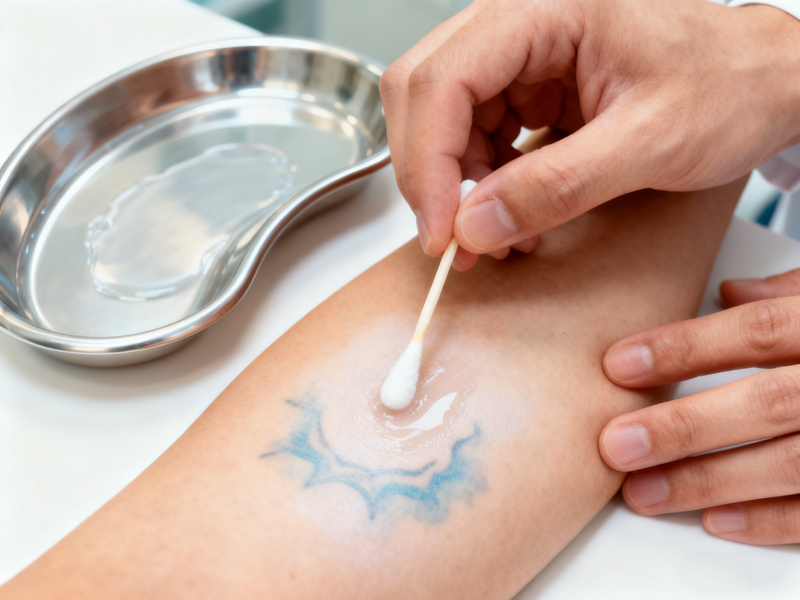
Surgical excision tattoo removal
Surgical excision tattoo removal is a method of completely removing tattoos by directly removing the skin tissue containing tattoo pigment entirely or partially through surgical means and then repairing the wound through suturing and other means. This method is especially suitable for tattoos with deep pigment deposition or complex colors.

Precautions
After surgical excision tattoo removal, all “smoke” must be eliminated, especially for patients with large surgical incisions. Smoking, including second-hand smoke and e-cigarettes, must be prohibited after surgery.
Because the “smoke” will affect the blood supply of the flap in the surgical area, and may increase the risk of scar hyperplasia, which is not conducive to postoperative recovery
The application of wound skin glue in tattoo removal
Medical wound skin glue is mainly used in two ways for wound closure and repair in the postoperative treatment of surgical tattoo removal: one is to use it alone to replace the traditional suture; the other is to use it in combination with the surgical suture to form a complement. Its core function is to simplify the operation, reduce trauma, promote healing, and reduce scars.
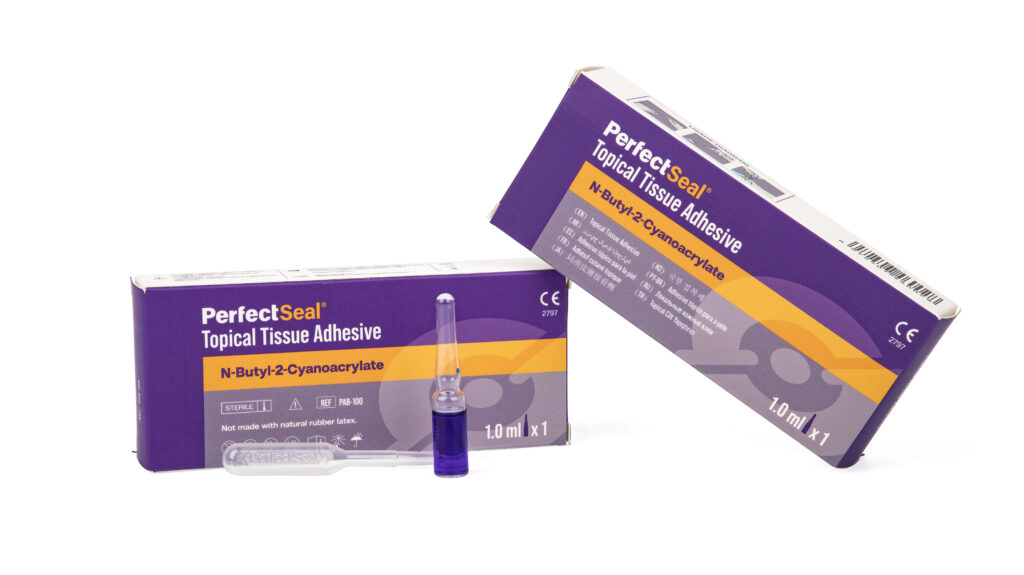
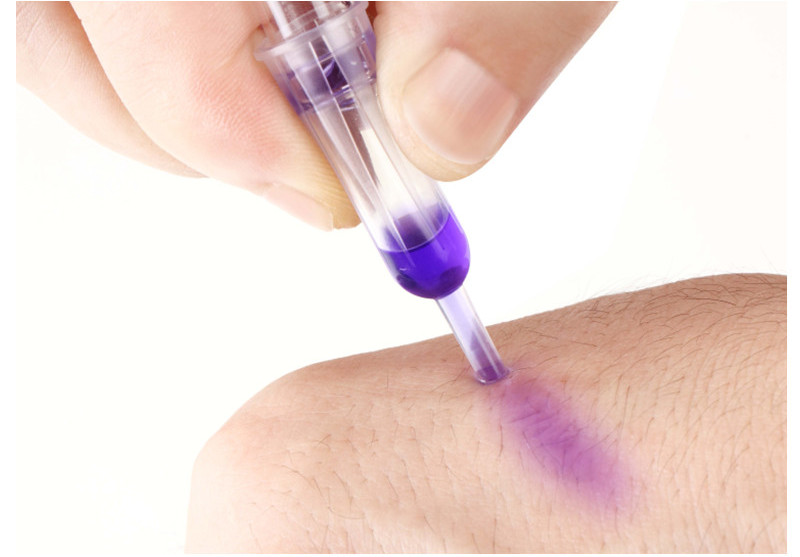
Application
This skin super glue is suitable for closing small, shallow excision wounds (usually less than 5 cm in diameter) with low skin tension on both sides of the wound that can be pulled together and aligned, such as the excision of small tattoos on small parts such as the wrist.
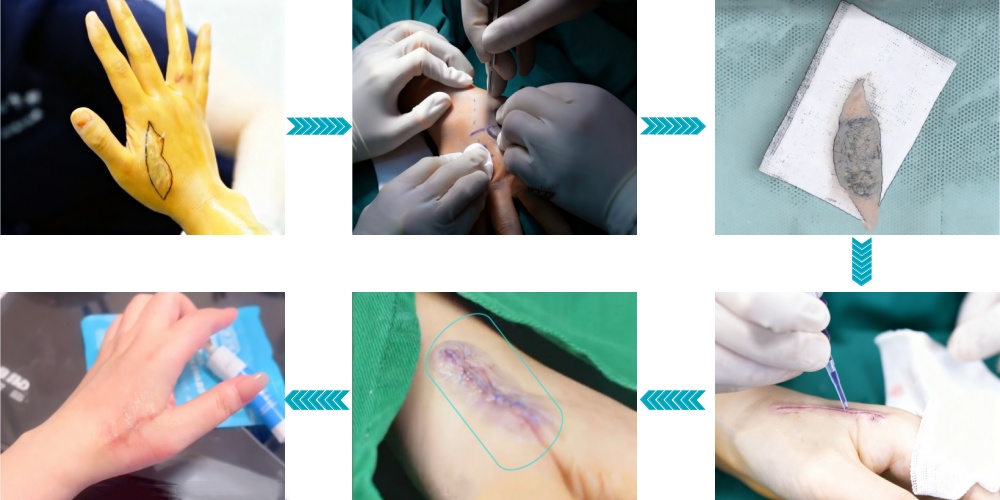
Areas with high esthetic requirements In exposed areas such as the face and neck, where the appearance of scars is highly valued, medical skin glue leaves no obvious suture marks after closure, which can reduce the “needle-hole scars” caused by sutures.
For small-area dermis excision wounds or large-area (10cm<length<40cm) tattoo excision surgery, the wound closure usually adopts the combined scheme of “super-tension-reducing suture and external skin adhesive bonding” to close the wound.
This method can further protect the wound, reduce external stimulation, and optimize the final scar appearance. Types of Suture Techniques
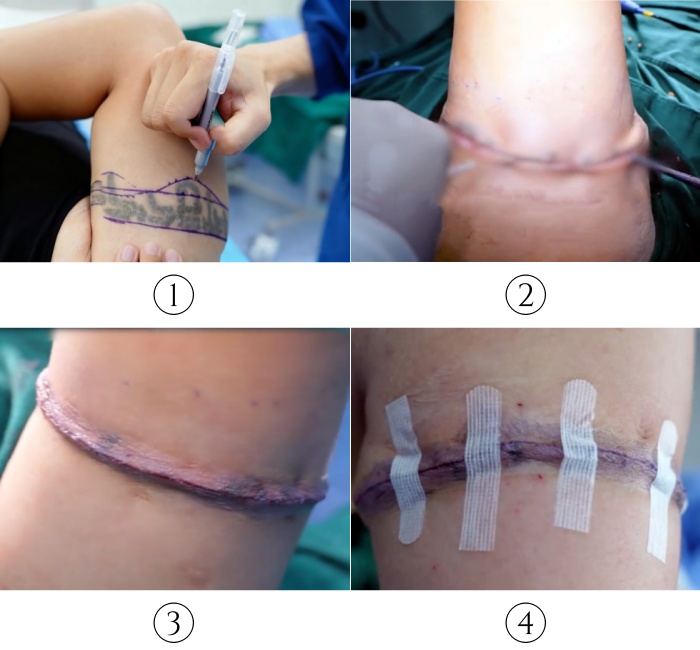
Why do patients who have undergone laser tattoo removal choose surgical excision tattoo removal?
The main reason people who undergo laser tattoo removal opt for surgical removal is that laser treatment didn’t achieve the desired results, leaving them with the only option for complete removal. For example:
- Laser treatment cannot fade or remove the remaining pigment.
- Hypertrophic scars and severe uneven pigmentation after laser treatment.
- Laser treatment was too long and expensive.
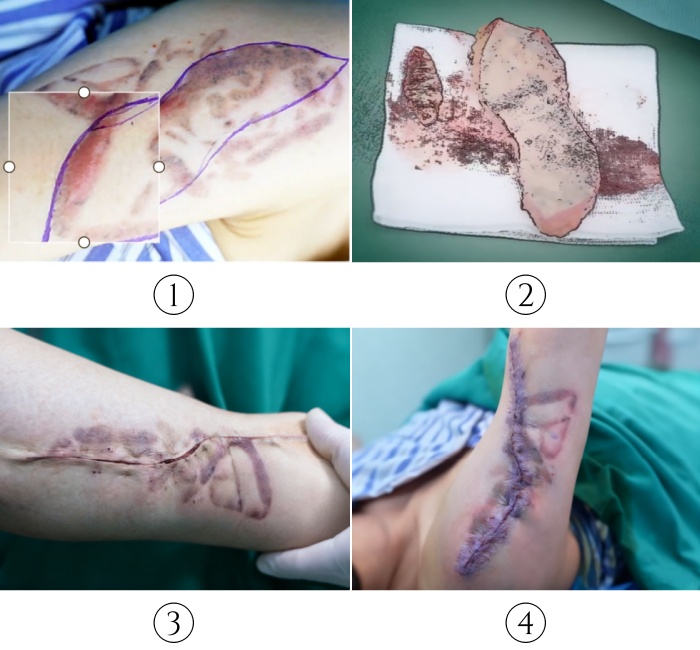
Schedule the consultation
Accurate patient assessment and adequate preoperative preparation are the core prerequisites for ensuring treatment safety and improving efficacy during the appointment consultation stage of tattoo removal. The basic information assessment includes the following:
- Type of tattoo: professional or non-professional tattoo.
- Location and area of tattoo.
- Tattoo age and pigment situation.
- Patient’s underlying health and chronic medical history: such as diabetes, coagulation disorders, autoimmune diseases, etc.
- Patient’s allergy and medication history.
- Special physiological state of the patient: such as pregnancy or lactation.
- Skin condition of the tattoo area.
- Skin Type and Pigmentation Risk Test.
Risks, benefits, and recovery care of tattoo removal
Risks of tattoo removal:
- Short-term adverse skin reactions (redness and swelling with pain, scabbing and desquamation, itching, etc.): common and mostly self-relieving.
- Pigmentary abnormalities: hypopigmentation or hyperpigmentation.
- Scarring: hypertrophic scars, atrophic scars, linear scars.
- Infection and other rare risks: infection, allergic reaction, tattoo pigment spread.
- Resolving the conflict between esthetics and emotion.
- Improve the overall appearance of the skin.
- Eliminating health risks associated with tattoos.
- Avoid long-term skin damage
- Meet the hard requirements of specific scenarios
Benefits of tattoo removal:
Recovery care of tattoo removal:
- Clean and protect the wound.
- Relieving discomfort and controlling inflammation.
- Strict sun protection and avoiding irritation.
- Preventing scars and pigment abnormalities: Scar patches (such as silicone patches) can be used as directed by a doctor.
- Regular follow-up and effect monitoring.
When to see a doctor
If you experience any of the following symptoms after tattoo removal surgery, seek medical attention or go to the emergency room immediately.
- Infection-related symptoms: wound redness, swelling, exudation, increased pain.
- Acute injury or allergy: blisters, broken skin, severe itching.
- Delayed wound healing: abnormal scab formation, long-term non-healing.
- Pigment and scar abnormalities: sudden changes in pigment, raised, contracted or depressed scars.
If you want to tattoo removal, be sure to choose a qualified hospital dermatology department or a compliant medical beauty clinic, and ensure that the equipment used is medical-grade laser equipment and the operating doctor has relevant practice certificates.
Before getting laser treatment, consult a doctor to learn how long it will take and how effective it will be. Make sure your doctor has experience working with people with your skin color, and be prepared to care for your skin while it heals.
Tattoos are meant to be permanent, and complete tattoo removal is difficult. Some degree of scarring or skin color variation is likely to remain, regardless of the specific method of tattoo removal.
FAQ
Can tattoos be completely removed?
Tattoos are permanent in nature and difficult to remove completely. No matter what method is used to remove a tattoo, it may leave a certain degree of scarring or skin color changes.
Whether it can be completely removed depends on the tattoo itself (color, size, depth), the removal method, and the individual’s physical condition.
How to simply determine whether your tattoo can be surgically excised at one time?
If the skin on both sides of the tattoo can be gently lifted and aligned together, and the tattoo is located on the limbs, waist, abdomen, or other parts with less skin tension, it can usually be surgically excised at one time.
If the tattoo is on a joint or other sensitive area, this method won’t work, and the doctor should decide after an in-person visit.
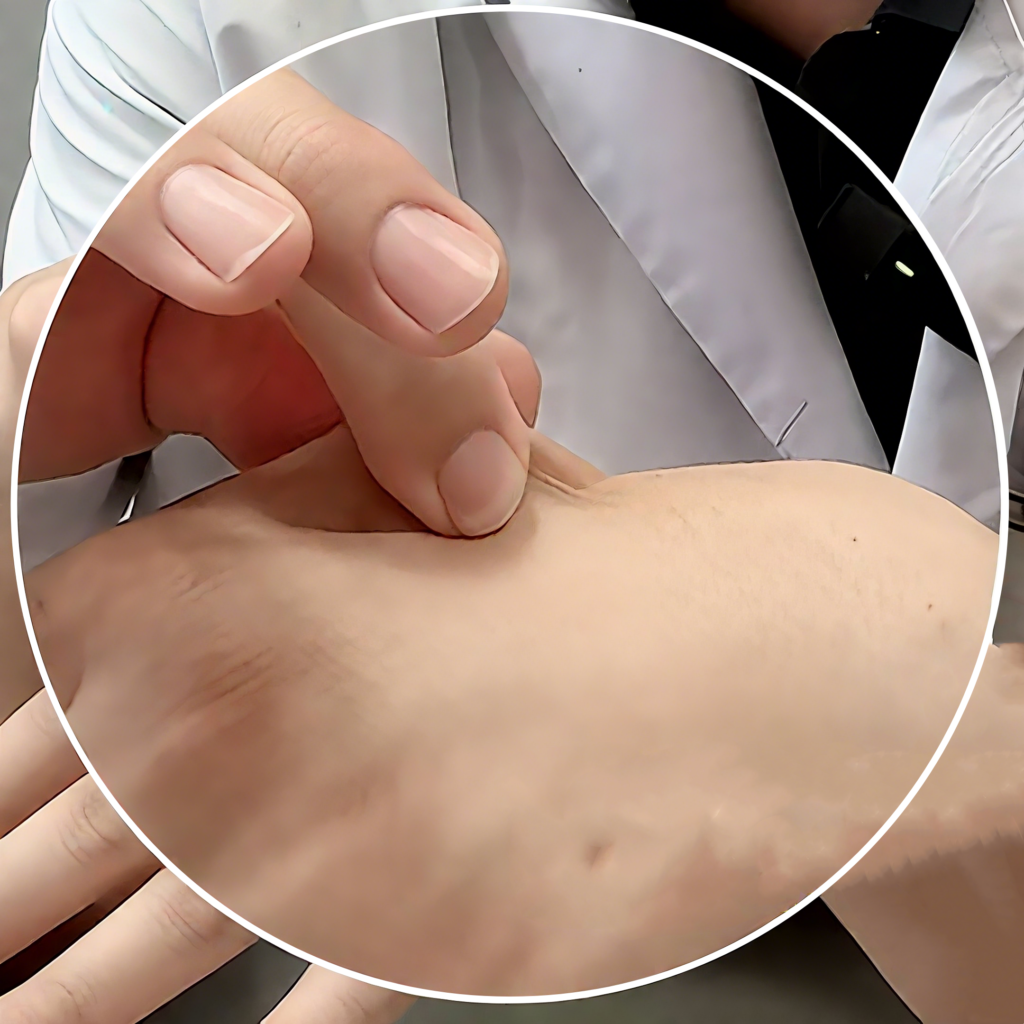
Can the butterfly tattoo be removed by a one-time surgery?
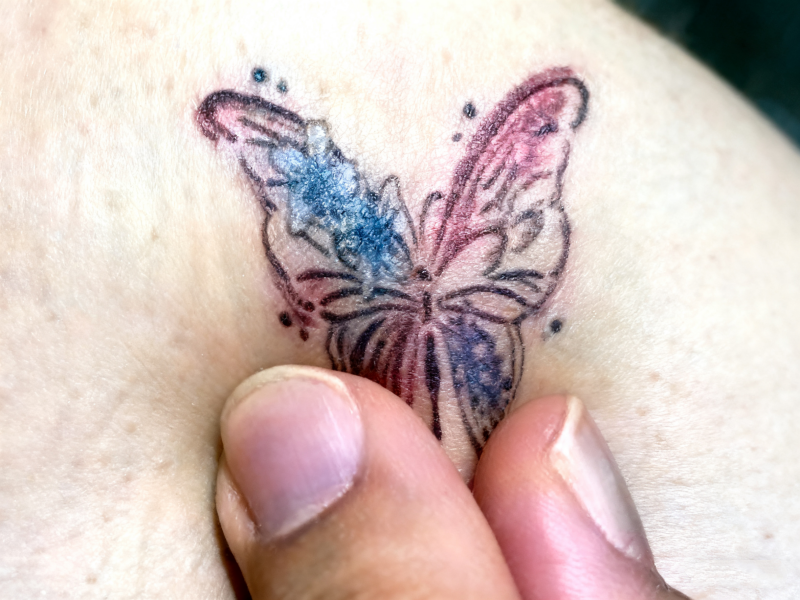
Butterfly tattoos are usually not recommended for one-time surgical removal.
The main reason is that the butterfly tattoo has a large wing area. If it is removed at one time, a large amount of normal skin in the middle needs to be removed together.
However, if it is removed in twice, only half of it is treated each time, more normal skin can be retained, and the damage to the skin tissue can be reduced.
What tattoos can’t be removed by laser removal?
The principle of laser tattoo removal is to decompose the color in the ink after it absorbs the laser energy. However, the absorption capacity of different colors of ink varies significantly. Among them, light-colored inks such as white, yellow, light blue, and pink are the most difficult to remove; green, red, and neon-colored inks are also challenging.
In addition, inks containing metal components, permanent makeup (such as eyebrow tattoos and lip tattoos), and some newer tattoos can also cause difficulties in laser removal due to the special components or the state of the ink, making it difficult to achieve the ideal removal effect.
Does tattoo removal cream work?
Tattoo removal creams are ineffective. Not only do they fail to remove tattoos, but they may also cause serious skin problems and should never be used as a substitute for formal medical treatment.
Can hydrogen peroxide remove tattoos?
Ink particles are embedded too deep into the skin, whereas hydrogen peroxide, which is limited to the epidermis, cannot penetrate deeply enough to decompose the pigment and remove the tattoo.
In addition, hydrogen peroxide has strong oxidizing properties, and applying it to the tattoo area will damage the skin barrier, causing redness, swelling, tingling, peeling, and even chemical burns, leaving permanent scars or pigmentation and other serious skin problems.
Are older tattoos easier to remove?
Old tattoos are usually easier to remove than new ones, because over time, skin metabolism and ultraviolet rays will naturally degrade and fade some of the shallow ink.
However, not all old tattoos are simple to remove. If the old tattoo contains special ink, such as metal, is deeper at the time, or is accompanied by skin aging and scars, the removal difficulty may be higher.
Can I undergo surgical tattoo removal immediately after laser tattoo removal if I regret it?
If you have just completed laser tattoo removal, and your skin is still experiencing stress, blood scabs, trauma, or swelling without recovery from the fractional laser treatment, the doctor typically recommends waiting about 2-3 weeks or even up to 1 month for the skin to heal before proceeding with surgical resection for safety reasons.
Does undergoing surgical excision for tattoo removal in the summer affect recovery?
Many people worry that sweating a lot in the summer and gauze covering the wound will affect wound healing, but during the wound healing period of 1–7 days after the operation, as long as the wound is strictly waterproof, slight or normal sweating will have no obvious effect on recovery.
On the contrary, the vigorous metabolism in the summer can accelerate tissue repair, and wound recovery is not significantly different from that in the winter.
What really affects recovery is the individual’s physical condition, the surgical procedure, and postoperative care, not simply the season.
How long after the surgical removal of a hypertrophic tattoo should I start using anti-scar medication?
Usually, the anti-scarring medicine can be used three or four days after the stitches are removed.
There are many choices of anti-scarring drugs, such as gel and silicone patches. The main ingredient is silicone, but it needs to be selected according to the scar site: transparent silicone gel is suitable for scars on the face, and a silicone patch can be selected for other parts.
Anti-scarring drugs generally need to be used every day for 1-3 months.
How much does it cost to fully remove a tattoo?
A single laser treatment typically costs between $200 and $600, depending on the size of the tattoo. The total cost varies widely depending on the number of treatments needed.
Small tattoos can be removed for a few hundred dollars, while large, complex tattoos can cost thousands of dollars. Older tattoos are easier to remove because the ink has settled, which may reduce the number of treatments and lower the total cost.
In addition, many institutions offer packages (including a fixed or unlimited number of treatments), which are more cost-effective than paying per treatment, and some also support installment payments; however, it should be noted that medical insurance usually does not cover the cost of such beauty projects.
REFERENCES
- Armstrong ML, Roberts AE, Koch JR, Saunders JC, Owen DC, Anderson RR. Motivation for contemporary tattoo removal: A shift in identity. Arch Dermatol. 2008;144:879–84. doi: 10.1001/archderm.144.7.879. [DOI] [PubMed][Google Scholar]
- Kirby W, Desai A, Desai T, Kartono F, Geeta P. The Kirby-Desai scale: A proposed scale to assess tattoo-removal treatments. J Clin Aesthet Dermatol. 2009;2:32–7. [PMC free article] [PubMed] [Google Scholar]
- Ferguson JE, August PJ. Evaluation of the Nd/YAG laser for treatment of amateur and professional tattoos. Br J Dermatol. 1996;135:586–91. [PubMed] [Google Scholar]
- THOMAS B. BRUNS, M.D., AND J. MACK WORTHINGTON, M.D. Using Tissue Adhesive for Wound Repair: A Practical Guide to Dermabond. Am Fam Physician. 2000;61(5):1383-1388. [PubMed] [Google Scholar]
- Ken J Farion, Kelly F Russell, Martin H Osmond, Lisa Hartling, Terry P Klassen,Tamara Durec, Ben Vandermeer. Tissue adhesives for traumatic lacerations in children and adults. Cochrane Database Syst Rev. 2002;2002(3):CD003326.doi: 10.1002/14651858.CD003326. [PubMed] [Google Scholar]
- G Marshall – Australian Prescriber. Skin glues for wound closure. Aust Prescr 2013;36:49–51. [Google Scholar]
- Jones A, Roddey P, Orengo I, Rosen T. The Q-switched ND: YAG laser effectively treats tattoos in darkly pigmented skin. Dermatol Surg. 1996;22:999–1001. doi: 10.1111/j.1524-4725.1996.tb00651.x. [DOI] [PubMed] [Google Scholar]
- Guedes R, Leite L. Removal of orange eyebrow tattoo in a single session with the Q-switched Nd: YAG 532-nm laser. Lasers Med Sci. 2010;25:465–6. doi: 10.1007/s10103-009-0748-2. [DOI] [PubMed] [Google Scholar]
- Levine VJ, Geronemus RG. Tattoo removal with the Q-switched ruby laser and the Q-switched Nd: YAG laser: A comparative study. Cutis. 1995;55:291–6. [PubMed] [Google Scholar]
- Anderson RR, Geronemus R, Kilmer SL, Farinelli W, Fitzpatrick RE. Cosmetic tattoo ink darkening. A complication of Q-switched and pulsed-laser treatment. Arch Dermatol. 1993;129:1010–4. doi: 10.1001/archderm.129.8.1010. [DOI] [PubMed] [Google Scholar]
- Kilmer S, Custis T. Single vs repeat exposure tattoo removal during single sessions with picosecond pulse duration laser technology. 34th American Society for Laser Medicine and Surgery (ASLMS) annual conference. Phoenix Arizona. 2014 [Google Scholar]
- Saedi N, Metelitsa A, Petrell K, Arndt KA, Dover JS. Treatment of tattoos with a picosecond alexandrite laser: A prospective trial. Arch Dermatol. 2012;148:1360–3. doi: 10.1001/archdermatol.2012.2894. [DOI] [PubMed] [Google Scholar]
- Brauer JA, Reddy KK, Anolik R, Weiss ET, Karen JK, Hale EK, et al. Successful and rapid treatment of blue and green tattoo pigment with a novel picosecond laser. Arch Dermatol. 2012;148:820–3. doi: 10.1001/archdermatol.2012.901. [DOI] [PubMed] [Google Scholar]

